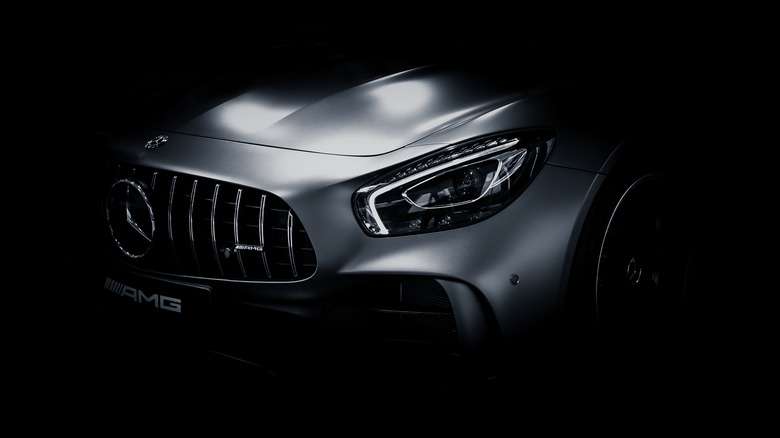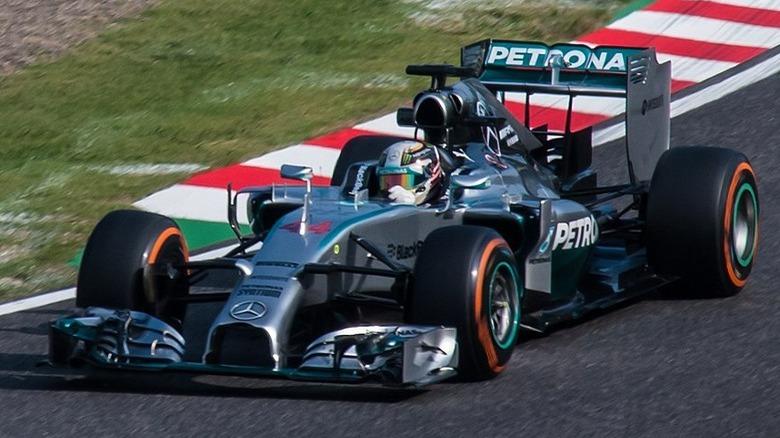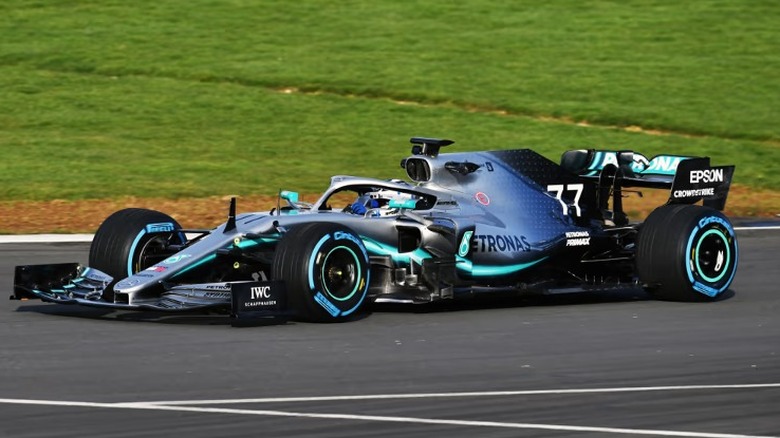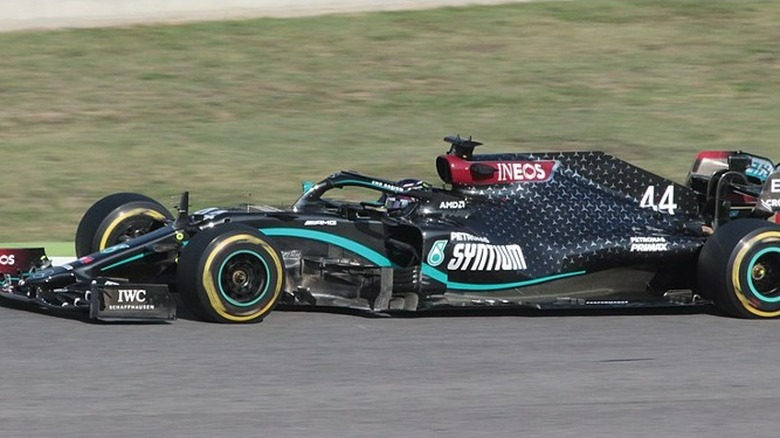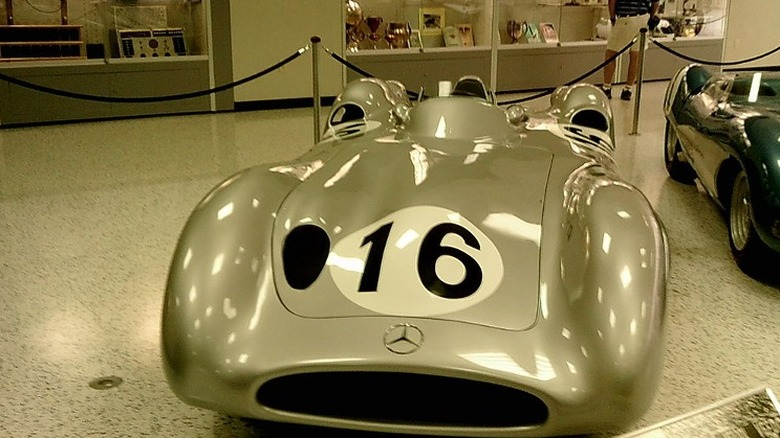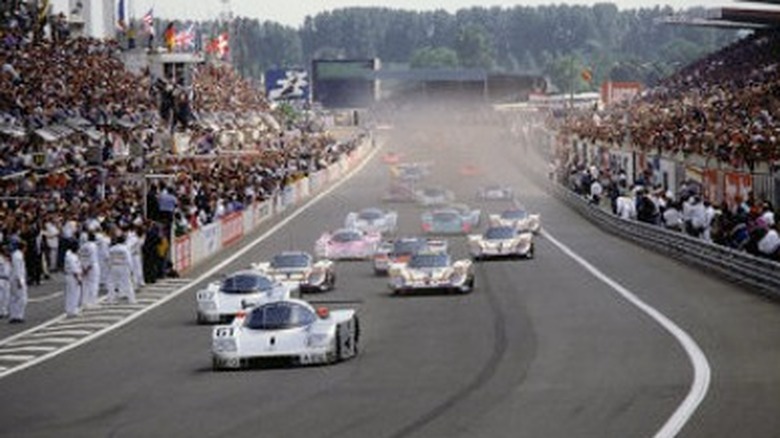The Top 5 Best Mercedes-Benz Liveries Ever, Ranked
Mercedes-Benz is perhaps best known in the racing world for its dominance over Formula 1 teams in recent years. Led by the exhilarating Louis Hamilton, the Mercedes-AMG Petronas racing outfit won the Constructors' Cup eight years in a row (between 2014 and 2021).
Currently, the Formula 1 team is led by Toto Wolff, and staffed in the cars by Hamilton and his teammate George Russell. The modern F1 chassis is the W14 model, and the modern works team itself has been participating in the Formula 1 field since 2010 — and first raced in the sport in 1970.
Mercedes-Benz was an early entrant into the world of autosports, participating in the 1894 Paris-Rouen race (the world's first automobile racing event), and was heavily involved in Grand Prix racing of the 1920s. Racing liveries have been a big part of the Mercedes story.
From the early iterations of the manufacturer's "Silver Arrows," through to modern Formula 1 speed, Mercedes-Benz has turned heads with classic and beautiful paint jobs alongside the vehicles underneath. These are the five best liveries that have adorned Mercedes-Benz racers throughout the years.
2014 Formula 1 silver W05
In 2014, the Mercedes Formula 1 vessel was built with the turbocharger split into two separate components. The turbine and compressor were rent apart in order to deliver an immense performance boost to the team's drivers. The design meant that the car's chassis could be constructed with smaller side pods, and a minimized cooling system, leading to better aerodynamic driving and an improved center of gravity.
Coupled with this engineering innovation was an equally stunning exterior. The W05 debuted in 2014 was clad in spectacular silver. From nose to tail, the car is draped in silver, recalling the Silver Arrow livery design that put Mercedes racing on the map all those years ago.
To complement the color scheme, the car is peppered with a few logos across the chassis — notably a pair of BlackBerry icons along the sides ahead of the driver (and on the top in some races as well), Petronas imagery on the side pods, and a few Mercedes-Benz logos in behind the driver. The side pods are completed with a flash of teal that seems to emanate up from the base of the vehicle, as if it were flame rising up from underneath the chassis. All in all, the livery is a classic and subtle skin for such a vastly dominant vehicle.
[Featured image by nhayashida via Wikimedia Commons | Cropped and scaled | CC BY 2.0]
The 2019 W10 for Formula 1
The W10 was Mercedes-AMG Petronas' 2019 offering to the Formula 1 paddock. The livery maintains the flare of silver that has often dazzled spectators, but applies it in a gradient that transitions into a black tone along the downward sloping edge of the vehicle's hindquarters.
In addition to this color change, the car is completed with a teal wave that runs from the nose of the car to just behind the driver's seat. The addition is brightened significantly by an internal, white streak and adds a finishing flash to the Mercedes vehicle that has introduced far more darkness to the overall pattern than prior models.
The black-dominant rear section of the W10 also fades in a series of small, faint Mercedes-Benz logos to pepper the car with a tasteful added feature, rather than sticking with a solid black paint scheme. Finally, on this year's car, the Mercedes team opted to utilize white numbers at the back of the body rather than the red numbering that adorned the team's cars in years prior.
Mercedes-dotted black in 2020's W11
Mercedes' 2019 livery was a fabulous style for the Formula 1 circuit, and Mercedes-AMG Petronas did it again in the following year. This time, the team enlarged the Mercedes-Benz logos and extended them forward. This makes the icons far more visible, and allows the pattern to really shine while covering even more real estate on the car.
As well, instead of the silver front segment that featured prominently on the previous year's racer, the W11 is an all-black affair that even utilizes a darker wave stripe while retaining the overall shape of the teal highlight. The car looks fantastically sleek and aggressively fast, but this isn't the only reason for making the shift away from a more traditional silver-dominated livery.
"Mercedes made a bold statement in ditching their traditional Silver Arrows look in favour of a black livery, in support of fighting racism and all forms of discrimination," Tom Rawcliffe writes for PlanetF1. The result is an attractive livery design, to be sure, and one that makes an immensely important statement.
[Featured image by Eustace Bagge via Wikimedia Commons | Cropped and scaled | CC BY-SA 4.0]
1954 Mercedes Silver Arrow W196
The 1954 season saw the entry of the Mercedes-Benz W 196 R, a Silver Arrow livery design that captivated the field at the time. 14 of the Mercedes-Benz W 196 R were produced, and the car was driven to nine Grands Prix victories in 12 races across 1954 and 1955 by Juan Manuel Fangio — the world champion in both seasons, as well.
The vehicle utilized a gradually rolling chassis design that sports sleek, virtually non-existent lines that blend into one another across the body of the car. To match, the Silver Arrow livery provides an all-silver paint job that's only interrupted by white circles on the hood and sides directly beneath the cockpit to allow for numbers to be added.
This is a true throwback to the storied history of Mercedes-Benz racing, and offers a beautiful and stylish addition to the conversation surrounding fantastic Mercedes liveries.
[Featured image by Doug4422 via Wikimedia Commons | Cropped and scaled | CC BY-SA 3.0]
The 1989 Le Mans winning Sauber-Mercedes silver C9
Perhaps the most iconic Mercedes livery of all times is the simple Silver Arrow design that took both first and second place in the 1989 24 Hours of Le Mans. Mercedes has long utilized the Silver Arrow design as a prominent feature, which meshes history with the refined beauty that each new car brings out (both in racing and the consumer marketplace).
The style is perhaps bland to some, but the history of Silver Mercedes vehicles is rich and long. In the same way that Ferrari racers almost have to be painted red (and for the Formula 1 team, they are), there's something that just fits with the cross section of a Mercedes-Benz and the Silver Arrow livery. The cars at Le Mans sported the sleek bodywork of a performance racer, as well as elongated fail fins that stretched the entire width of the vehicle's back end.
While Formula 1 has become a highlight of the Mercedes brand's racing acumen in the modern era, the company's heritage lies in these roots. All the more impressive is the fact that 1989's Le Mans was the first time Mercedes-Benz had participated in the race as a works team since 1955. The return brought victory to the outfit and the Silver Arrow livery back to the forefront of Mercedes racing in a major way.
